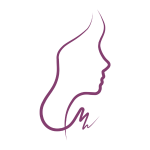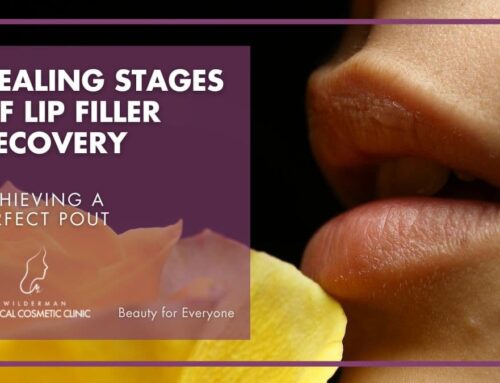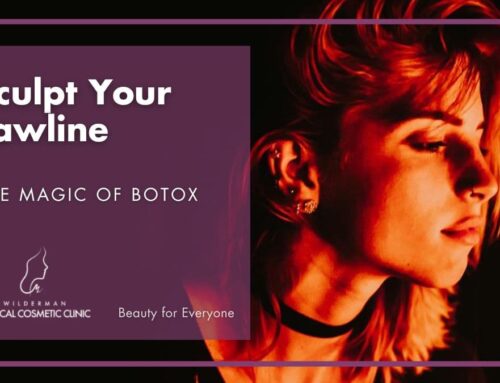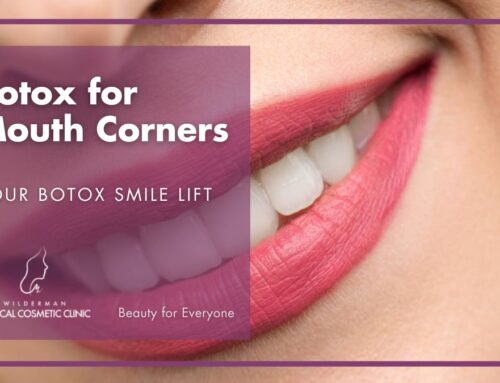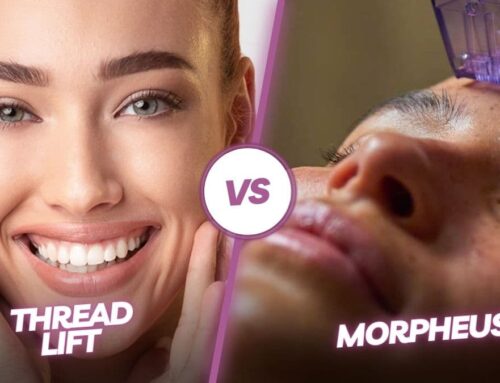Navigating Botox Recovery
A Comprehensive Guide to Healing Stages, Tips, and What Not to Do
As a good and safe medicine to reduce the appearance of facial wrinkles, Botox has emerged as a sought-after cosmetic solution. It involves the temporary relaxation of muscles through the application of botulinum toxin, which is derived from the bacterium Clostridium botulinum. While “Botox” is a proprietary drug name, there are other brand names like Dysport and Xeomin, which offer variants of botulinum toxin type A injections.
Despite the quick and minimally invasive nature of these injections, a thorough comprehension of the recovery process is essential for achieving optimal results and ensuring a seamless healing experience.
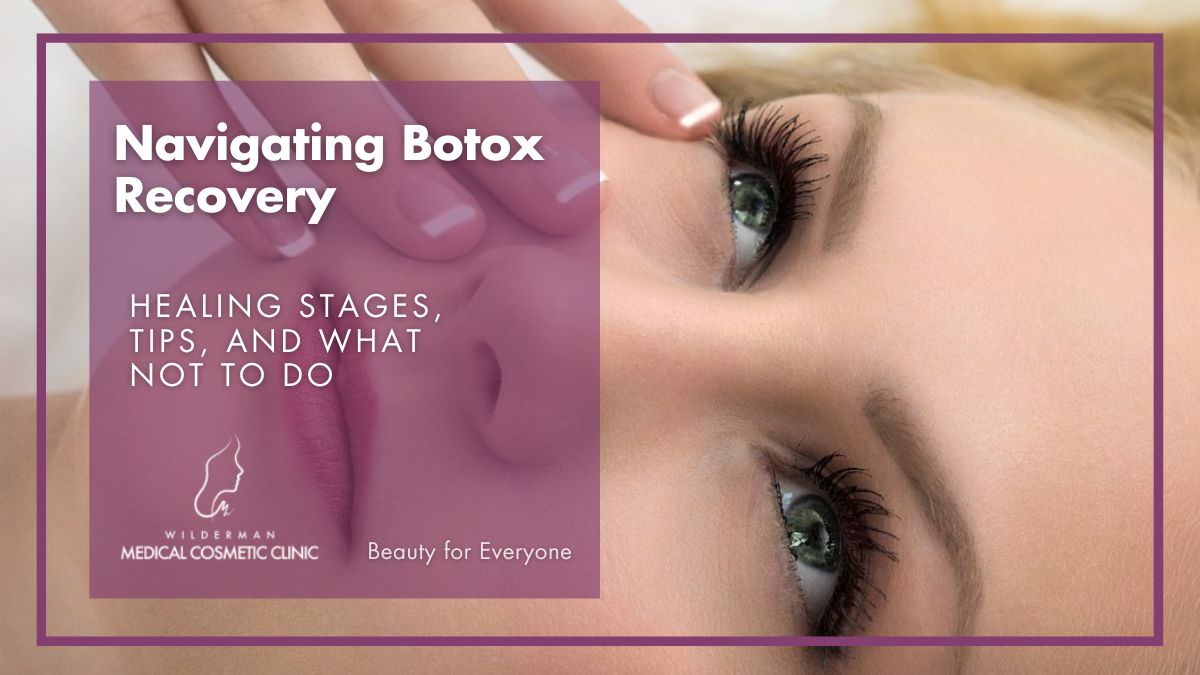
Get immediate answers to your questions about treatment options, costs, expected outcomes, and more.
- Expert Diagnosis
- Customized Treatment Plans
- No Obligation
- Comfort and Privacy
- Immediate Answers
Recovery timeline
The healing stages and recovery timeline of Botox treatment can vary from person to person, but there are general patterns that many individuals experience. Understanding these stages can help manage expectations and ensure a smooth recovery process.
Here’s a general guide for your recovery timeline:
1. Immediate Post-Injection:
Day 0: Right after the Botox injections, you may experience some redness, swelling, and possibly bruising at the injection sites. This is normal and typically subsides within a few hours to a day.
2. First 24-48 Hours:
Day 1-2: Swelling and redness may persist, but they should gradually improve. Some people may experience mild discomfort or headache during this time.
3. First Week:
Day 3-7: Any lingering swelling or bruising should continue to diminish. The effects of Botox typically start to become noticeable during this period as the muscles relax.
4. 2-3 Weeks:
Day 14-21: The full effects of Botox usually become apparent within 2-3 weeks. Wrinkles and fine lines are minimized as the muscles continue to relax.
5. Long-Term Results:
After 3 Weeks: The benefits of Botox treatment can last anywhere from 3 to 6 months, depending on individual factors. As the effects gradually wear off, muscle contractions and wrinkles may return.
Tips for a good recovery
A successful recovery from a Botox treatment involves following specific guidelines and incorporating healthy habits to enhance the healing process.
Here are some tips for a good recovery after Botox:
Stay Hydrated: Drinking an adequate amount of water is essential for overall health and can aid in the body’s natural healing processes. Hydration helps flush out toxins and promotes skin health.
Sun Protection: Protecting your skin from the sun is crucial after Botox treatment. Direct sunlight can exacerbate swelling and bruising. Use sunscreen with a high SPF or wear a hat when outdoors to prevent sun damage to the treated areas.
Gentle Facial Cleansing: During the initial recovery period, opt for mild facial cleansers and avoid using harsh skincare products. Gentle cleansing helps maintain the health of the treated skin without irritating it.
Sleep with Head Elevated: Elevating your head while sleeping can assist in reducing swelling, especially during the first few nights after Botox injections. Consider using an extra pillow or an inclined sleeping position to promote optimal recovery.
Follow Aftercare Instructions: Your skincare provider will provide specific aftercare instructions tailored to your needs. Follow these instructions meticulously to ensure the best results and minimize the risk of complications.
Avoid Strenuous Activities: Refrain from engaging in strenuous activities and exercise for the first day or two after Botox treatment. Physical exertion can increase blood flow to the face and may contribute to swelling and bruising.
Limit Alcohol Consumption: Alcohol can thin the blood and increase the risk of bruising. It’s advisable to limit alcohol consumption in the first 24-48 hours after the procedure to promote a smoother recovery.
Patience and Rest: Allow your body the time it needs to heal. Adequate rest is an essential component of a successful recovery. Avoid unnecessary stressors and prioritize self-care during this period.
Schedule Follow-Up Appointments: Attend any scheduled follow-up appointments with your healthcare provider. These appointments allow for the assessment of results and provide an opportunity to address any concerns or questions you may have.
By incorporating these tips into your post-botox routine, you can contribute to a positive recovery experience and maximize the benefits of the treatment. If you have specific questions or concerns, always consult with your skincare expert for personalized advice and guidance.
What not to do
Avoiding certain activities and behaviors is crucial for a smooth and successful recovery after a Botox treatment.
Here’s a guide on what not to do during the post-botox recovery period:
- Excessive Sun Exposure: Direct sunlight and heat can exacerbate swelling and bruising. Avoid prolonged sun exposure, and use sunscreen or wear a hat to protect the treated areas from the sun.
- Heavy Makeup Application: Applying heavy makeup can irritate the treated skin and may interfere with the healing process. Refrain from using heavy or abrasive makeup on the treated areas for at least the first day or two after the procedure.
- Blood-Thinning Medications: Medications or supplements that thin the blood can increase the risk of bruising. If possible, avoid blood-thinning medications before the procedure. Consult with your healthcare provider about the safety of temporarily discontinuing such medications.
- Facial Treatments: Intense facial treatments, such as chemical peels, can be too harsh on the treated skin and may interfere with the effects of Botox. Avoid facials, chemical peels, or any other aggressive facial treatments for at least one week after receiving Botox injections.
- Touching or Massaging Treated Areas: Touching or massaging the treated areas can potentially spread the toxin and affect adjacent muscles. Resist the urge to touch or massage the treated areas immediately after the procedure. Allow the injected Botox to settle undisturbed.
- Vigorous Exercise: Strenuous physical activity can increase blood flow to the face, leading to more pronounced swelling and bruising. Refrain from engaging in vigorous exercise or activities that may cause excessive sweating for the first day or two after the treatment.
- Ignoring Aftercare Instructions: Aftercare instructions provided by your skincare provider are tailored to your specific needs and aid in a successful recovery. Follow the instructions for optimal results and minimal complications.
By avoiding these activities and adhering to aftercare instructions, you can contribute to a more comfortable and effective recovery process after a Botox treatment.
Conclusion
Undergoing a Botox treatment is a transformative step towards achieving a more youthful and rejuvenated appearance. While the injections are minimally invasive and the recovery period relatively short, careful attention to aftercare is vital for optimal results.
The immediate post-injection phase may involve temporary swelling and bruising, but these typically subside within the first few days. It is essential to adhere to aftercare instructions provided by your healthcare provider, which may include the application of ice, gentle facial cleansing, and avoiding certain activities.
Tips for a good recovery, such as staying hydrated, using arnica cream, and protecting the skin from the sun, can further contribute to a positive outcome. On the other hand, knowing what not to do—such as avoiding excessive sun exposure, heavy makeup application, and certain medications—plays a crucial role in preventing complications and optimizing the results of the Botox treatment.
Patience is key during the recovery period, and individuals should allow their bodies the time needed to fully experience the benefits of Botox. Follow-up appointments with skincare providers are essential for assessing results and addressing any concerns.
In the end, a successful Botox recovery goes beyond the injection itself; it is a holistic process that combines medical expertise, personalized aftercare, and individual commitment.
By navigating the post-Botox journey with diligence and grace, individuals can enjoy the long-lasting benefits of a smoother, more youthful complexion.
Reference
Satriyasa BK. Botulinum toxin (Botox) A for reducing the appearance of facial wrinkles: a literature review of clinical use and pharmacological aspects. Clinical, Cosmetic and Investigational Dermatology. 2019 Apr 10;12:223-228. doi:10.2147/CCID.S202919.
Healthline. (Jul 9, 2020.). Botox Aftercare: Tips, Side Effects, and More. Retrieved from https://www.healthline.com/health/beauty-skin-care/botox-aftercare (Accessed Dec 15, 2023).
WebMD. (Nov 27, 2021). Botox Aftercare: What to Know. Retrieved from https://www.webmd.com/beauty/what-to-know-about-botox-aftercare (Accessed Dec 15, 2023).
Botulinum Toxin: Insights and Key Information
Personalized Botulinum Solutions at Thornhill’s Wilderman Cosmetic Clinic: Your Path to Flawless Skin
What is Botulinum toxin? The neurotoxin that erases wrinkles and alleviates pain – Botulinum toxin is a potent neurotoxin produced by the bacterium Clostridium botulinum. It is widely known for its cosmetic and medical …
Botulinum Toxin vs. Fillers: Decoding the World of Injectable Aesthetics – In the ever-evolving world of aesthetic enhancements, the battle of injectables remains fierce. Two popular contenders, botulinum toxin (commonly known as Botox, Dysport, or Xeomin) and fillers (Restylane, Juvederm, etc.), have taken …
What is the Nefertiti lift? Your first stop to an elegant neck and jawline – The Nefertiti lift is a cosmetic procedure that involves injecting small amounts of botulinum toxin type A into specific muscles of the neck. These are the muscles that run vertically from …
Botox for Crow’s Feet: A Guide to Youthful Eyes – The eyes are said to be the windows to the soul, but as time passes, they can also be the canvas for aging signs like crow’s feet. These fine lines that radiate from the corners of the eyes are a common concern for many …
Botox for Forehead Wrinkles: Causes, Solutions, and Considerations – The pursuit of a smooth and youthful complexion has led many individuals to explore various cosmetic procedures, with Botulinum toxin popularly known as “Botox” (other common brands are Dysport, Xeomin, and Letybo) emerging …
Botulinum Toxin for Neck Bands: Secret to a Youthful Neck – The aging process comes with its own set of challenges, and one common concern is the development of neck bands or lines.
Botox for bags under the eyes: what you need to know – What factors should be considered? Dark under-eye circles can be caused by a variety of factors, including genetics, lack of sleep, and aging. Allergies and eczema can also lead to dark circles, as can excessive rubbing or …
Botulinum toxin for Frown Lines: Treatment, Results, Takeaway – Frown lines, also known as glabellar lines, are the furrows that form between our eyebrows over time due to repeated facial expressions. These lines can often make us appear older or give off an unintended …
Maintaining Your Beautiful Feet: Aesthetic and Functional Benefits of Foot Filler – Our feet are the unsung heroes of our bodies, carrying us through life’s adventures. However, they often don’t get the attention they deserve when it comes to beauty and care …
Botox for Platysmal Bands: A Guide to Smooth Youthful Neck – As the pursuit of a more youthful appearance advances, there is a growing popularity for non-invasive cosmetic procedures. Among these procedures, Botulinum toxin, commonly referred to as Botox, stands out as …
Stay Ahead of the Beauty Curve
Beyond Beauty: Elevate Your Routine with Insider Tips and Breakthroughs – Subscribe Now!
Transform your beauty routine into something extraordinary!

